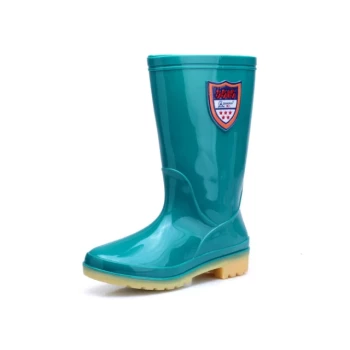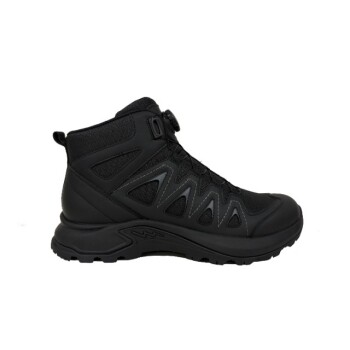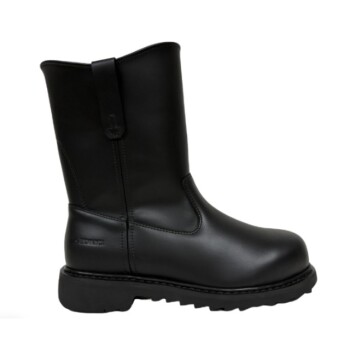While using a walking boot, you should contact your doctor immediately if you experience persistent or increasing pain, signs of a poor fit that you cannot correct, or if your recovery seems slower than expected. Any new or worsening symptoms are a clear signal that your healing process needs to be reassessed by a medical professional.
A walking boot is a precise medical tool, not just a comfortable shoe. Think of any new pain, persistent discomfort, or improper fit as a warning light indicating that this tool may need professional recalibration to ensure your injury heals correctly.
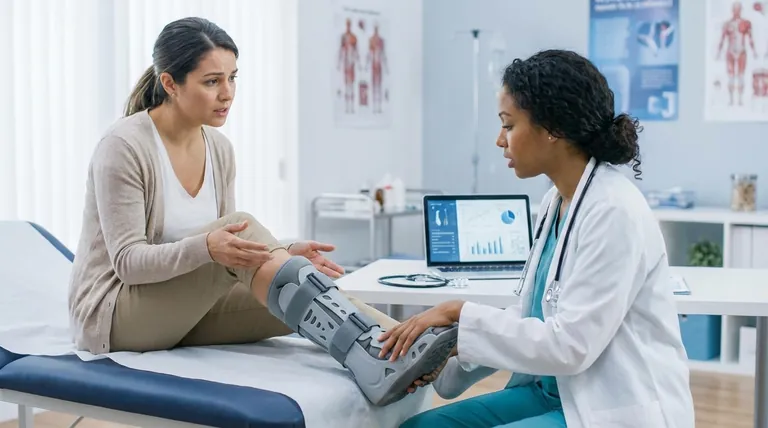
Monitoring Your Pain Levels
Pain is your body's primary signaling system during recovery. Learning to distinguish between expected discomfort and a genuine warning sign is critical.
The Difference Between Healing and Harm
A certain level of discomfort is normal, especially when you begin putting weight on the injured area. However, this discomfort should be manageable and gradually decrease over time.
Pain that is sharp, constant, or progressively worsening is not a normal part of the healing process. It suggests the injury may not be healing correctly or that the boot is causing a secondary problem.
When Pain Returns or Increases
Pay close attention to any pain that returns or intensifies after a period of improvement. This can be a sign of re-injury or a complication.
Similarly, if pain increases after you have stopped using the boot as directed by your doctor, it is a crucial reason to seek medical advice.
Ensuring a Proper and Stable Fit
The effectiveness of a walking boot is entirely dependent on its fit. An improper fit can delay healing or even cause new injuries.
Signs of an Incorrect Fit
A boot that is too loose will fail to immobilize the injury, while a boot that is too tight can restrict blood flow and cause pressure sores. Look for excessive movement of your foot inside the boot, or areas of intense pressure, numbness, or tingling.
When Adjustments Aren't Enough
Most boots have straps or air chambers for minor adjustments. If you cannot achieve a snug, comfortable fit after making these adjustments, the boot may be the wrong size or style for you.
Contact your doctor if you cannot get the boot to fit correctly or if discomfort persists even after deflating an air chamber meant to relieve pressure.
Common Pitfalls to Avoid
It can be tempting to modify how you use the boot to improve comfort, but this often undermines its medical purpose and can be dangerous.
The Risk of Unauthorized Adjustments
Your doctor prescribes a walking boot with specific settings for a reason. Never adjust Controlled Ankle Motion (CAM) settings or remove the boot unless explicitly instructed to do so.
Changing these settings can alter the alignment of the healing bone or ligament, effectively derailing your recovery.
Ignoring Your Own Concerns
The instructions from your medical provider are important, but so is your own experience. If something feels wrong, it probably is.
Do not hesitate to contact your doctor if you have any questions or concerns about your condition or care. It is always better to get professional reassurance than to ignore a potential problem.
Making the Right Call for Your Recovery
Use these guidelines to determine your next step.
- If your primary issue is increasing pain: Contact your doctor immediately, as this is the clearest sign that your injury is not healing as expected or a complication has developed.
- If your primary issue is the boot's fit: Attempt minor strap or air adjustments, but if you cannot achieve a stable, comfortable fit, call your provider for a refitting.
- If your primary issue is slow progress or uncertainty: Trust your intuition and contact your doctor to discuss your concerns and confirm your recovery timeline.
Your active participation is essential for a successful recovery, and that includes knowing when to seek expert guidance.
Summary Table:
| Warning Sign | Action to Take |
|---|---|
| Sharp, constant, or worsening pain | Contact your doctor immediately |
| Inability to achieve a stable, comfortable fit after adjustments | Call your provider for a refitting |
| Numbness, tingling, or signs of poor circulation | Seek medical advice promptly |
| Slow progress or uncertainty about recovery timeline | Discuss concerns with your doctor |
Ensure a Safe and Effective Recovery with Professional-Grade Support
Navigating injury recovery requires reliable equipment and expert guidance. As a large-scale manufacturer, 3515 produces a comprehensive range of medical and protective footwear for distributors, brand owners, and bulk clients. Our production capabilities ensure high-quality, precisely fitting walking boots that support proper healing.
If you are a medical supplier or retailer looking to provide your customers with dependable recovery solutions, let's discuss your needs. We can help you source or customize footwear that prioritizes patient safety and comfort.
Contact our team today to learn more about our products and how we can support your business.
Visual Guide
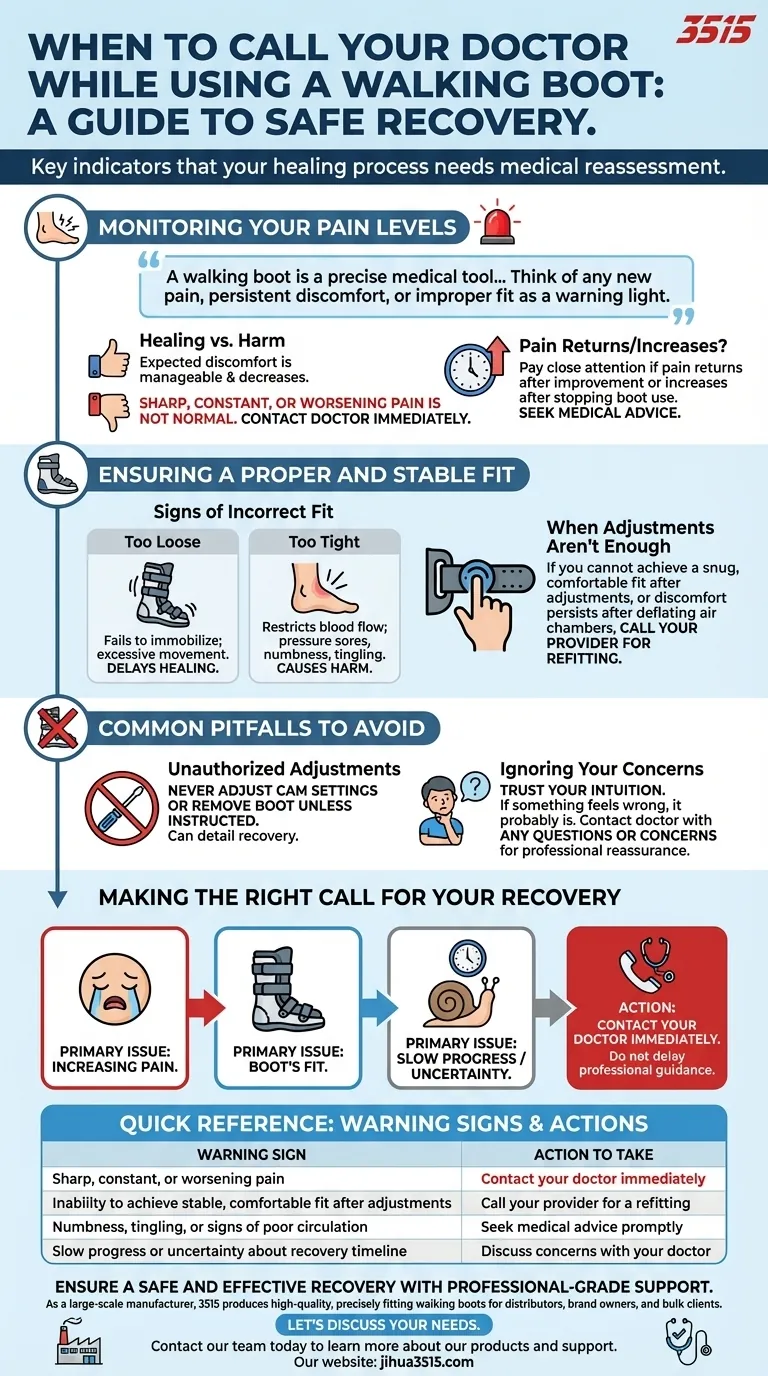
Related Products
- Safety Footwear Wholesale Manufacturer for Custom OEM/ODM Production
- Premium Grain Leather Safety Boots for Bulk Supply
- Wholesale Safety Footwear Manufacturer for Bulk & Custom OEM Orders
- Customizable Anti-Smash Safety Boots for Wholesale & Private Label Manufacturing
- Premium Wholesale Waterproof Safety Boots High Performance Protection for Industrial Markets
People Also Ask
- Is it normal to wear shoes in the house? A Guide to Hygiene, Comfort & Culture
- What are the cultural perspectives on wearing shoes in the house? A Guide to Home Etiquette & Hygiene
- How do safety shoes contribute to cost savings for companies? A Strategic Investment in Risk and Cost Management
- Is safety-toe as good as steel toe? Choose the Right Protection for Your Job
- Do snake bite boots work? Your Ultimate Guide to Effective Snake Bite Protection














